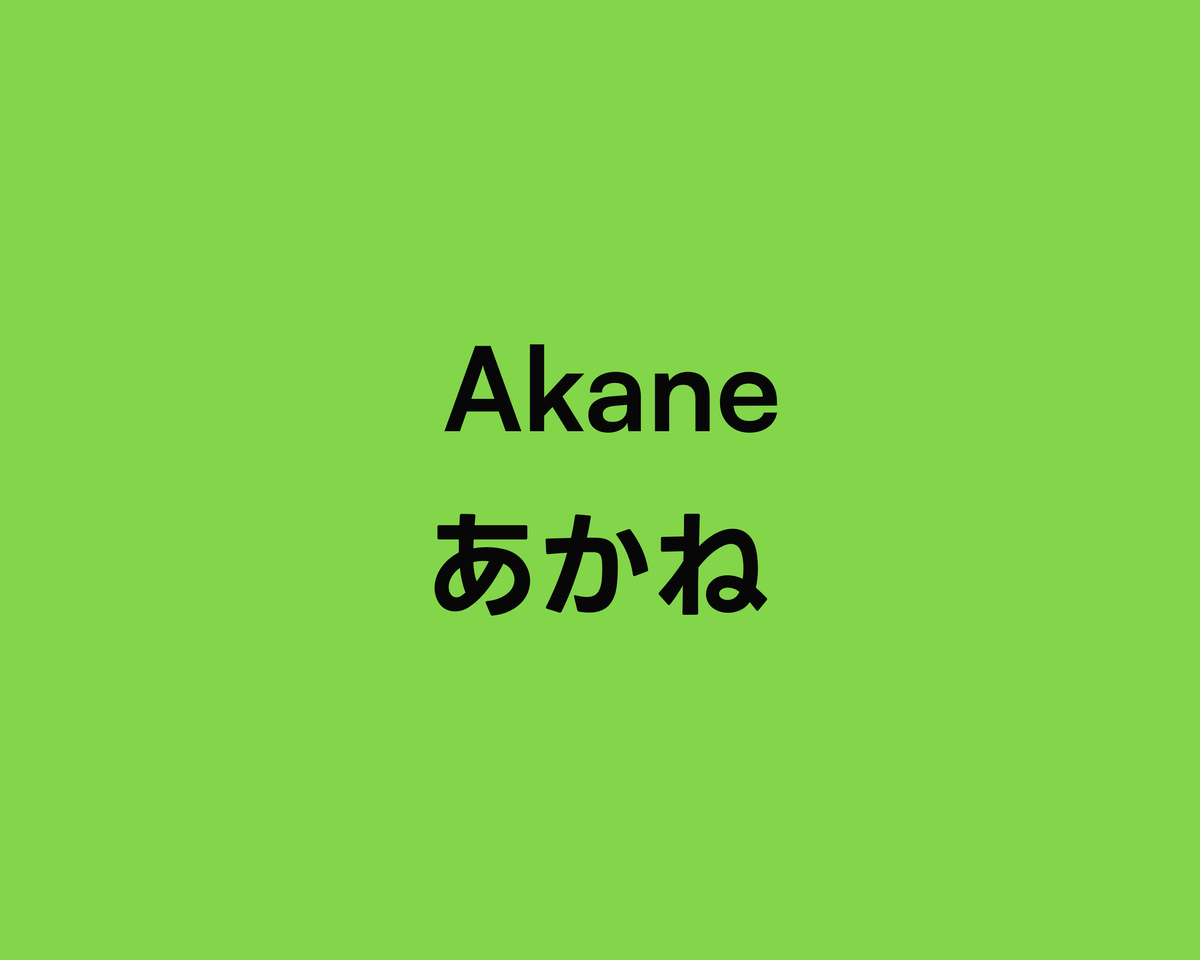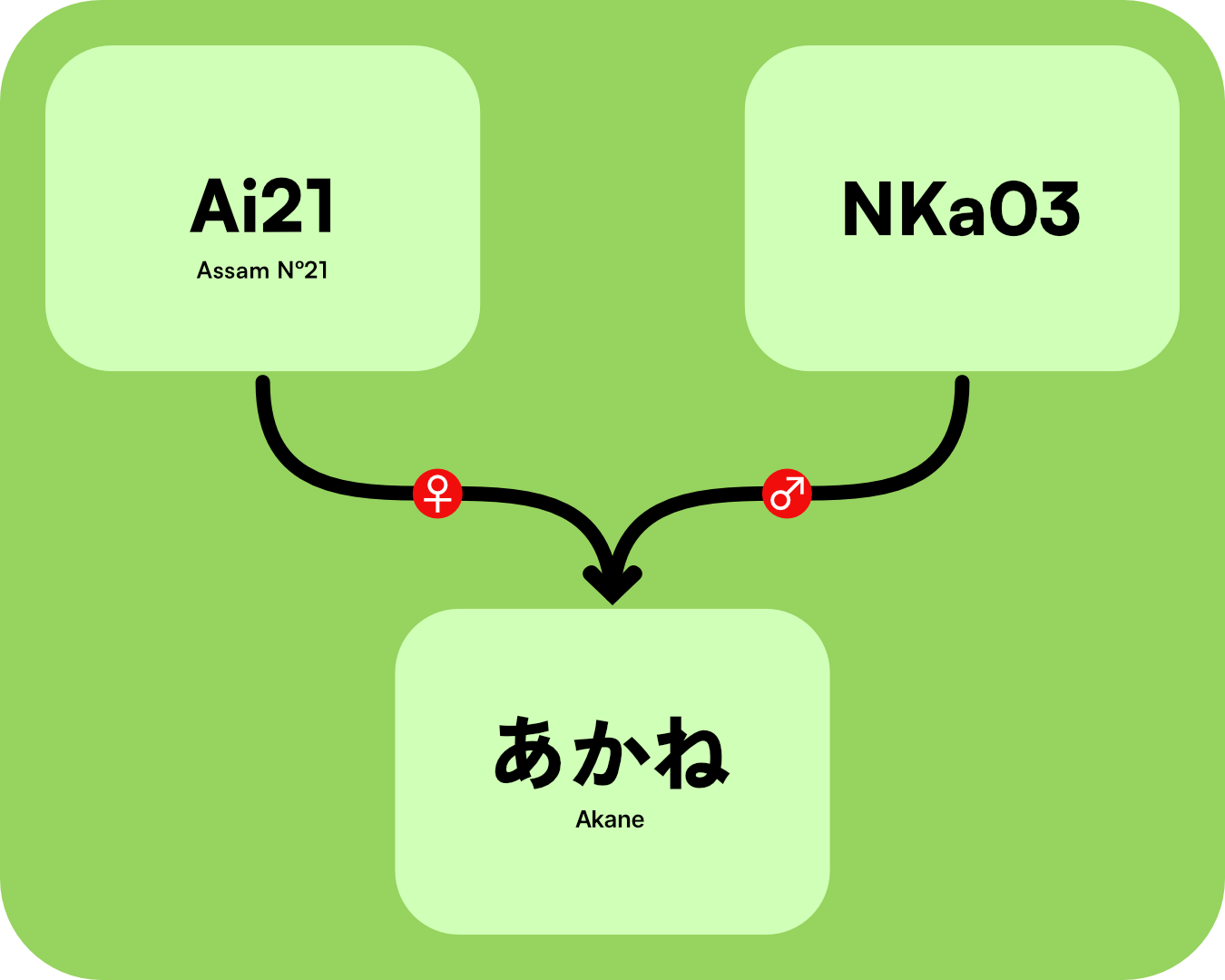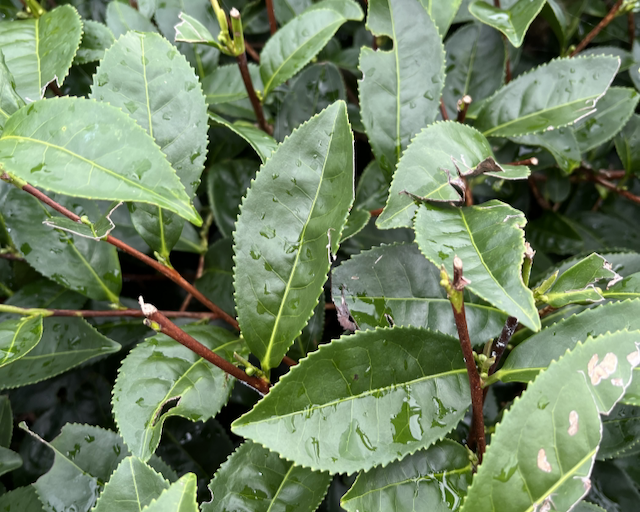Akane あかね

Status: 🌱
Genealogy
♀: Ai21-Assam Nº21
♂: NKa03

History
The Akane cultivar is a crossing from 1935, with Ai21 as a flower component and NKa03 as the pollen component, crossed at the Kagoshima agricultural research station. Ai21 or Assam Nº21 is a series of plants introduced from Assam, used in crossbreeding other cultivars like Ai2 for Hatsumomiji or Ai26 for Benitachiwase. In modern literature, Ai12 is cited as the flower component, while the original release paper cites Ai21. On the other hand, NKa03 seems to be a Zairai selection from the Kagoshima prefecture. Unfortunately, I could not find more details on that.
In 1939, Akane was selected from the many offspring of that crossing in the nursery. From 1942 to 1952, it was subject to tests as a cultivar for black tea production under strain name Kagoshima Assam cross Nº132 (鹿アッサム交配132号). In 1953, it was registered as a black tea cultivar under the registry of the Ministry of Agriculture and Forestry as cultivar Nº15 茶農林15号. Akane has a bright red liquor when brewed. It gets its name from one of the possible readings in Japanese for Akane is madder, a type of red dye. Another possible interpretation seen in one of the papers is that its red colour and colour shift on the edge of the cup are reminiscent of a sunset colour.
It is a recommended cultivar for black tea production and was part of the original registration of 15 cultivars in 1953. That initial registration included 15 cultivars, of which 5, including Akane, were recommended for black tea. The other registered black tea cultivars were, Benihomare Nº1 茶農林1号, Indo Nº12 茶農林12号, Hatsumomiji Nº13 茶農林13号 and Benitachiwase Nº14 茶農林14号.
Characteristics
This cultivar is suitable for black tea production in the warmer regions of Kyushu, Shikoku, Kinki and Tokai. Akane is a medium-sized medium-harvest time cultivar with vigorous growth, high regenerative potential and robust rootstock once it has developed, as its growth during the juvenile period is rather poor. It is a late-rooting cultivar that requires careful management, especially during the nursery period before root development. It has oval, large, dark green waxy leaves with abundant trichomes, and its yield was considered high. The buds are medium-sized, and the hundred bud weight is 60 grams.

In terms of harvest quantity, this cultivar was bred and then registered in 1953, so there aren't the usual comparisons to Yabukita in terms of diseases or harvest production. The reported harvest amounts hover between 267kg for the first and 194kg for the third. The comparison of cultivars in the original release paper is Hatsumomiji and Benihomare, two other cultivars from the 1953 registration. Akane is 8% less productive than Hatsumomiji but 38% more than Benihomare.
It is highly resistant to both cold and some diseases. The black tea quality is good due to its high tannin content with low anthocyanin levels. The levels of tannin almost doubled during the second and third harvest, according to the data in the release paper. Compared with Hatsumomiji, the cultivar it was compared in the release paper, it has a Chinese-style black tea fragrance with a strong flavour and a crisp aftertaste, without any harshness and a bright red colour brew.
References
‘Registered Tea Varieties’. Chagyo Kenkyu Hokoku (Tea Research Journal), vol. 1953, no. 2, Oct. 1953, pp. 95–97. DOI.org (Crossref), https://doi.org/10.5979/cha.1953.2_95.
